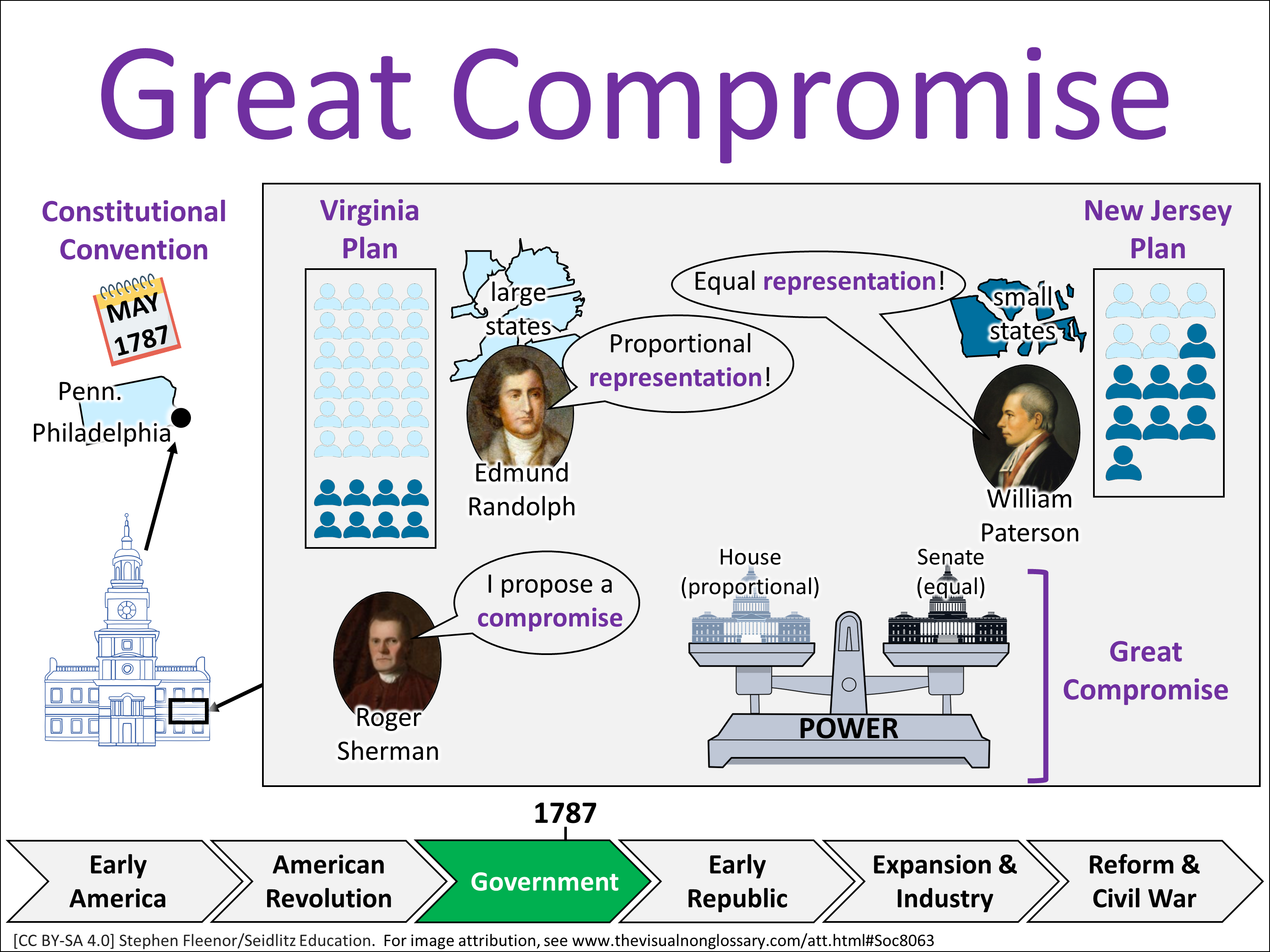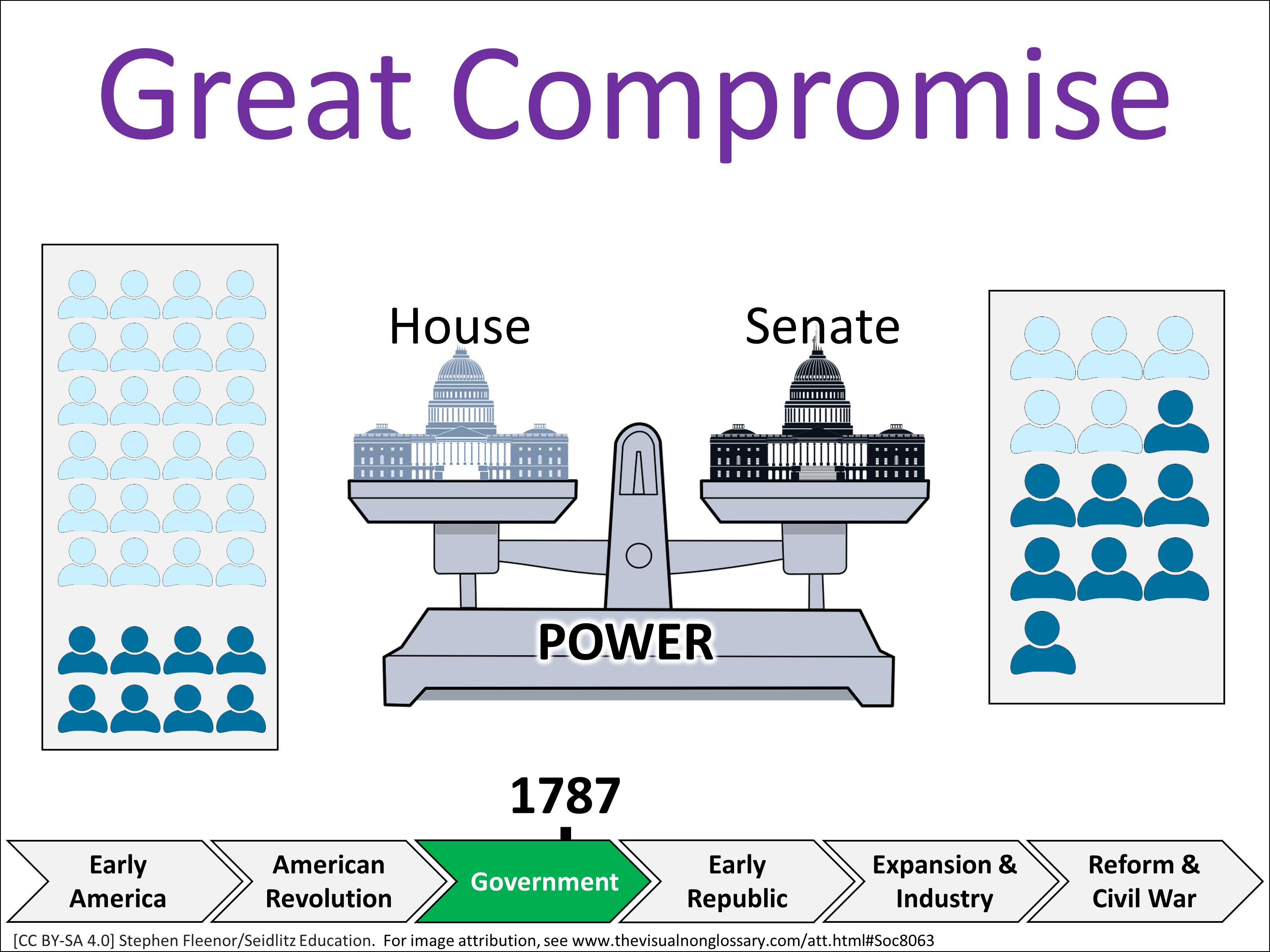Great Compromise: US History 1450-1877 (8th) 🌐 Ver en Español
History
The Articles and the Constitutional Convention
Vertical Alignment
TEKS:
| 8th | 8.4(D), 8.21(C) |
Linked To
Downloads
- Visual
- Word wall visual
- Lesson Plan
- Lesson Materials
Structured Conversation Questions
Observational
What was the Great Compromise?
The Great Compromise ...Relational
How is the Great Compromise related to a bicameral legislature?
The Great Compromise is related to a bicameral legislature because...Inferential
What do you predict would have happened if the Great Compromise was never proposed? Why?
If the Great Compromise was never proposed, I predict... because...
Please log in to comment.
Students might notice in this visual:
- The Great Compromise is connected to both the Virginia Plan and the New Jersey Plan
- The Virginia Plan favored large states and representation by population
- The New Jersey Plan favored small states and equal representation
- The Great Compromise created a bicameral legislature
- The House of Representatives and Senate were formed as a result
EXTENDING THE DISCUSSION
After the observational question, randomly call on one or more students to share what they or their partner answered. Then ask the class, “Did anyone notice…?” using the suggestions above or anything else you’ve noticed.
After the observational question, randomly call on one or more students to share what they or their partner answered. Then ask the class, “Did anyone notice…?” using the suggestions above or anything else you’ve noticed.
Students might wonder:
- Why did the states disagree about representation?
- What would have happened if no compromise was reached?
- Why is it called a “compromise”?
- What powers does each house of Congress have now?
- How did this decision impact smaller and larger states differently?
EXTENDING THE DISCUSSION
After students have shared what they notice, ask the class, “Did anyone wonder…?” using the suggestions above or anything else you might think is interesting or relevant to the lesson.
After students have shared what they notice, ask the class, “Did anyone wonder…?” using the suggestions above or anything else you might think is interesting or relevant to the lesson.
Example student responses
To the observational question, What was the Great Compromise?
LOW-LEVEL
The Great Compromise made two houses. One is based on population and one is equal.
HIGH-LEVEL
The Great Compromise is an agreement made during the Constitutional Convention that created a two-house legislature. It solved the issue of representation by giving population-based representation in the House and equal representation in the Senate.
RESPONDING TO RESPONSES
Emphasize and celebrate each student’s use of the key vocabulary to support a culture of “no wrong answers.”
Emphasize and celebrate each student’s use of the key vocabulary to support a culture of “no wrong answers.”



